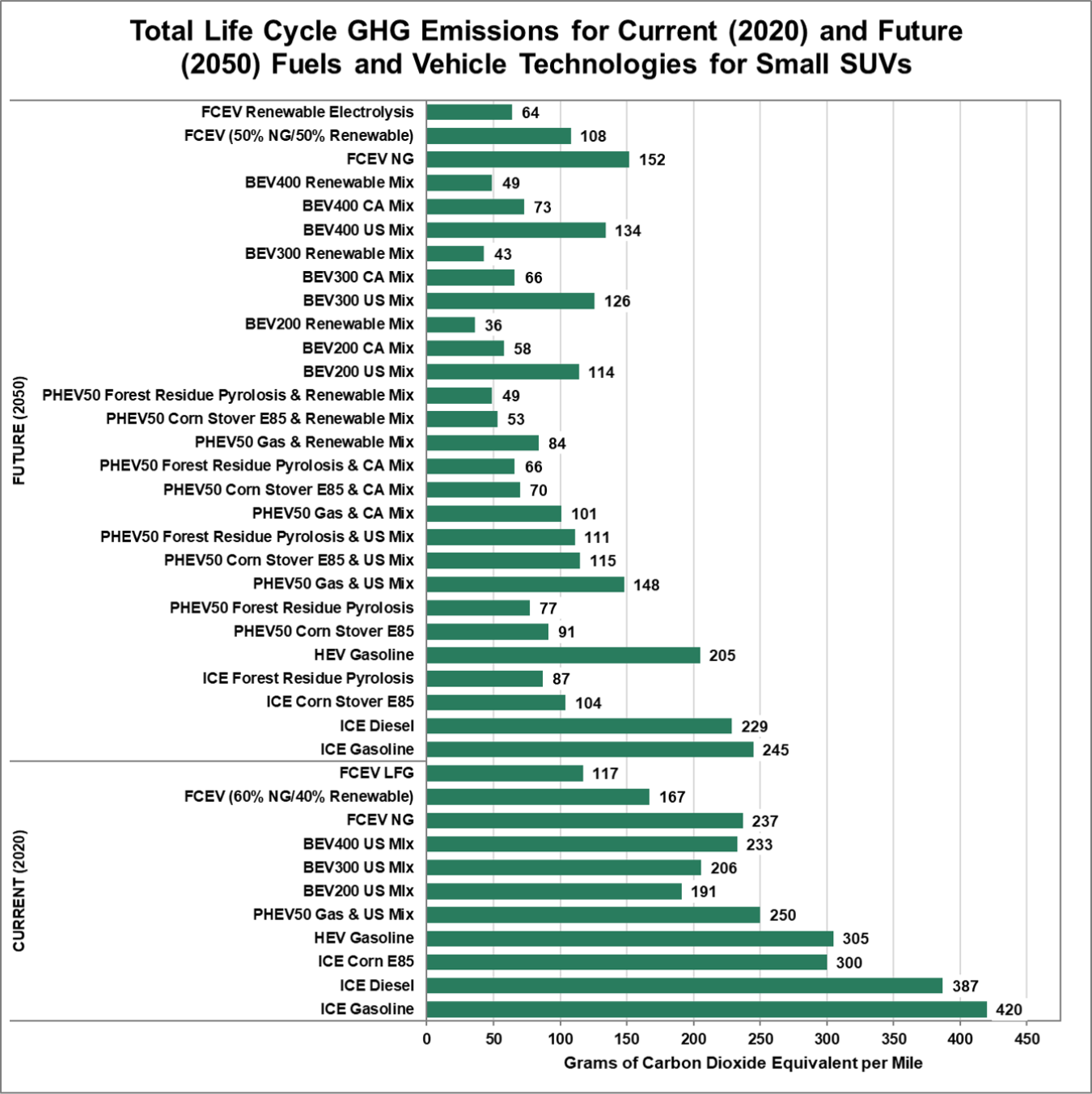A 2020 conventional gasoline small sport utility vehicle emitted an average of 420 grams of greenhouse gas carbon dioxide equivalents per mile when considering the entire life cycle of the vehicle, from cradle-to-grave and well-to-wheels.
October 18, 2021A 2020 conventional gasoline small sport utility vehicle (SUV) emitted an average of 420 grams of greenhouse gas (GHG) carbon dioxide equivalents per mile (g CO2e/mi) when considering the entire life cycle of the vehicle, from cradle-to-grave and well-to-wheels. A 2020 battery-electric vehicle with 300 miles of real-world range (BEV300) using the average U.S. grid mix emitted about half of that—206 g CO2e/mi. Estimates for future vehicle and fuel combinations show even lower life cycle emissions when compared to their current counterparts. A 2050 BEV300 using a renewable electricity mix is estimated to emit 43 g CO2e/mi.

Note: FCEV = fuel cell electric vehicle. HEV = hybrid-electric vehicle. BEV = battery-electric vehicle. PHEV50 = plug-in hybrid electric vehicle with 50-mile electric range. ICE = internal combustion engine. NG = natural gas. E85 = 85% ethanol and 15% gasoline. LFG = landfill gas.
Source: U.S. Department of Energy, Office of Vehicle Technologies, Hydrogen and Fuel Cell Technologies & Bioenergy Technologies, Program Record #21003.

